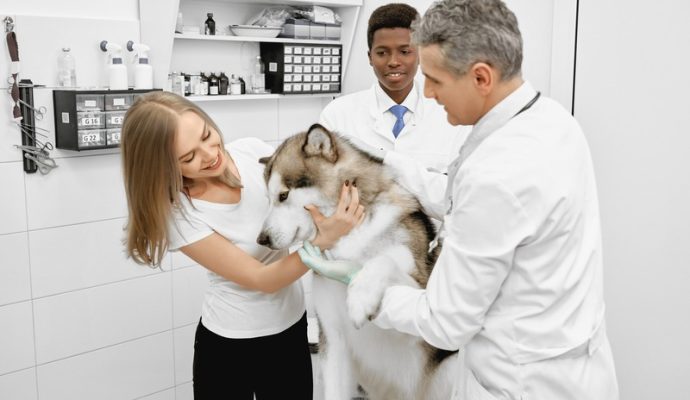Dogs are inherently curious, lively, and joyful, and although people desire these qualities, they may lead to unintended mishaps. Their intensity ranges from minimal to perhaps fatal. Not all cuts and scuffs on dogs require urgent veterinary care so that you may handle simple injuries at home. Find the correct animal first aid treatments to follow in your home if your animal is hurt.
Ways to Treat Dog Wounds at Home
Cuts, scuffs, and other little injuries are common among our dogs. Because of their higher excitability than residential felines, canines are especially susceptible to more of these occurrences. Our dogs commonly experience cuts, abrasions, and other forms of skin damage. The level, location, and sort of injury all play a role in how best to treat it. Because of this, obtaining the expertise needed to treat small canine wounds at home punctually and reliably is vital.
Stop the Bleeding
When managing external blood loss, the initial and most important action is to end the origin of the hemorrhaging to prevent blood loss, which might cause the heart rate to go up and the blood pressure to drop. Extreme blood loss over a long time might damage or eradicate important organs. Apply mild pressure with a clean cloth or towel over the bleeding spot. Heavy bleeding suggests a more severe wound than a small cut; thus, a trip to the emergency veterinarian clinic is required. Veterinary laser therapy can also help alleviate the wounds.
Clean the Wound
Bites and other cut wounds may seem safe, but they are not. Transmittable bacteria exist in bite wounds. Apply antibiotic ointment and a plaster, even if the cut isn’t too large. Clean the part with cold water or a saline option to get rid of any debris, filth, or crud that might block the injury and cause infection. Cut the hair away from the damaged region and use the water-based lubricant to eliminate the trimmed hair. You should wash the damaged spot with lukewarm water and pat it dry with a clean, dry fabric or paper towel.
Disinfect the Wound
To properly wash the broken area, utilize a cleaner such as diluted betadine or chlorhexidine, commonly incorporated in pre-packaged first aid kits. You should not use rubbing alcohol or hydrogen peroxide, as they might harm the tissue and delay healing.
Apply a Bandage to the Cut and Cover It Up
After cleaning the cut carefully, apply a small portion of antibacterial ointment and cover it with sterilized gauze or another plaster. To safeguard the bandage, you might use tape or a clip. An e-collar or “cone of shame” might be utilized to keep your dog from licking or eating at a bandage, which may relay internal illness. Click here to learn more about internal conditions in pets.
Put on Some Wound Spray
Making use of the spray hastens the procedure of wound treatment by eliminating the hazardous microorganisms, viruses, protozoa, ringworms, and other viruses in charge of producing skin infections. Additionally, there are wound sprays that function to relieve discomfort and swell to a certain degree. Use wound spray as an additional line of defense to prevent fleas, flies, and other pests from entering the wounded place. Consider dog and cat vaccinations to prevent fleas from your pet.




